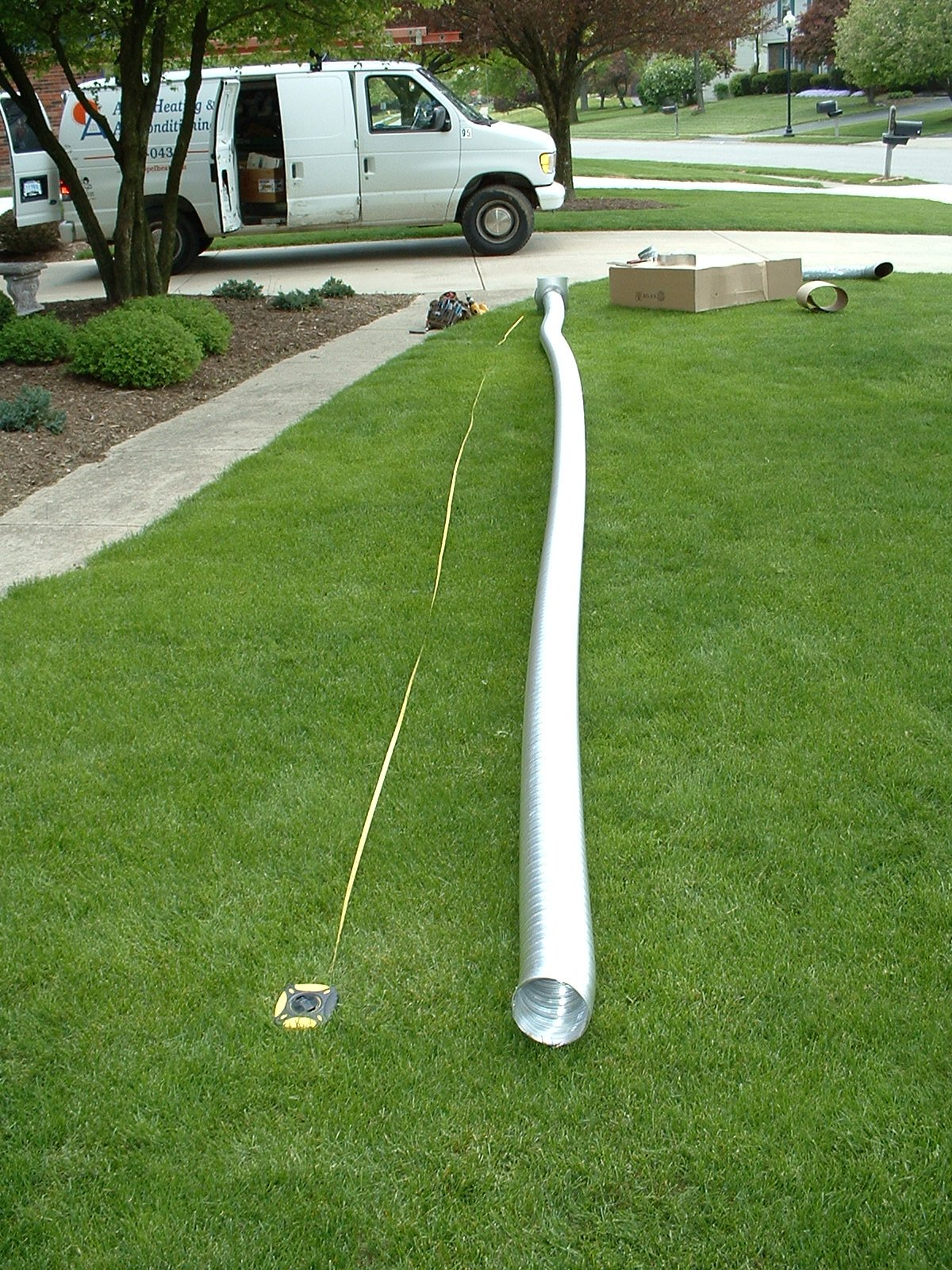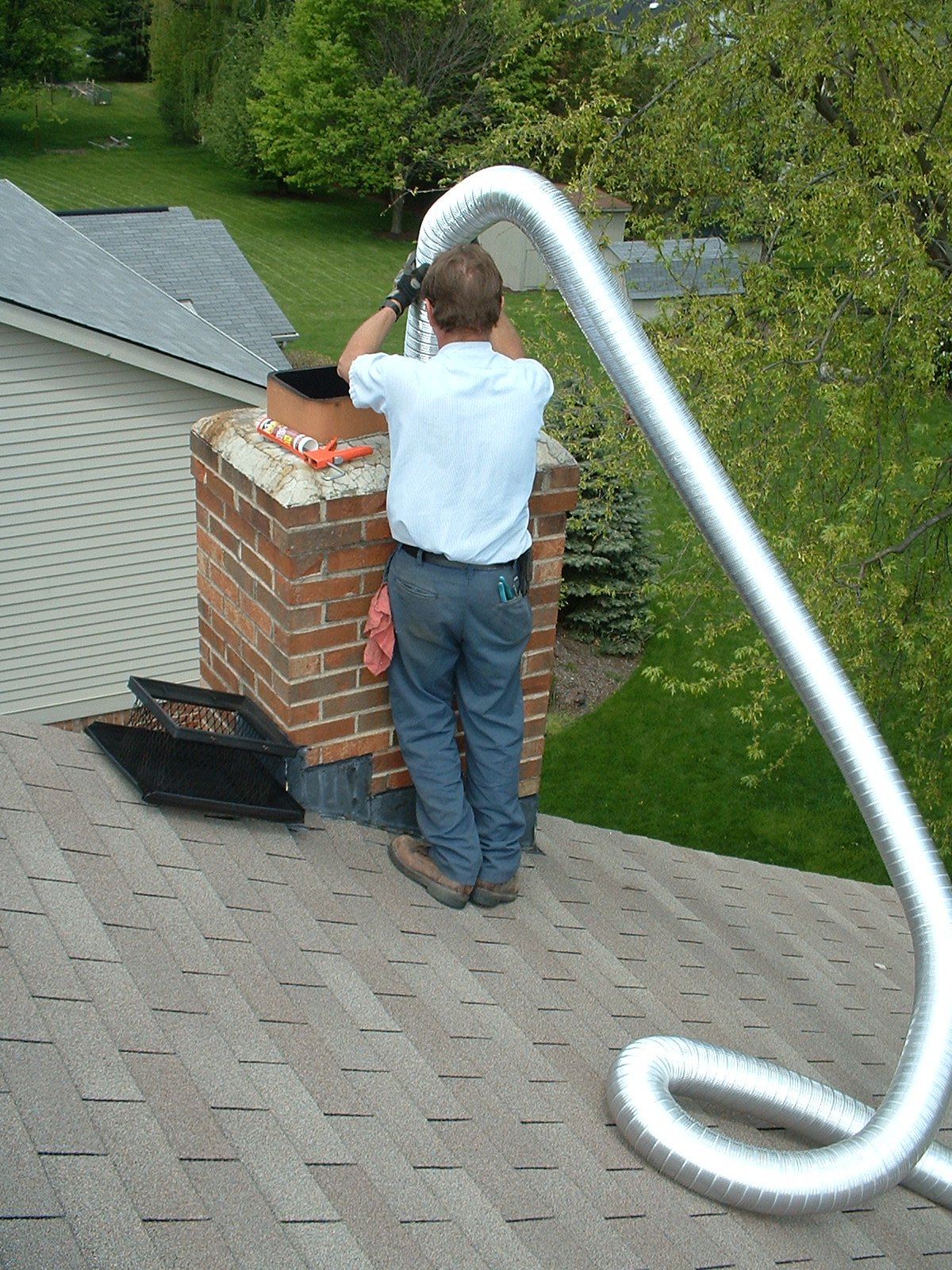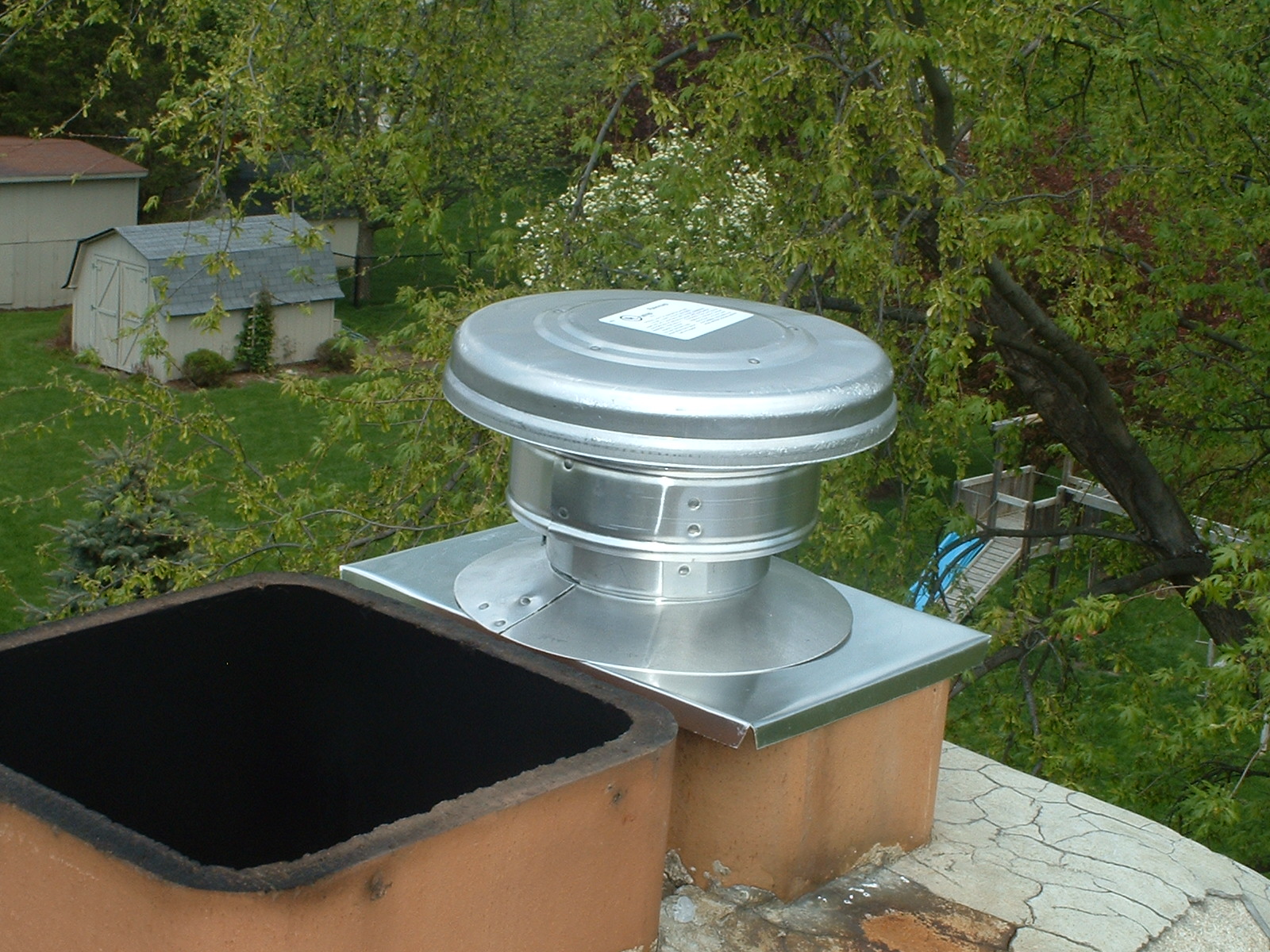

IN RECENT YEARS, THE GAS INDUSTRY HAS DISCOVERED THAT SOME GAS APPLIANCE INSTALLATIONS HAVE RESULTED IN EXPENSIVE CHIMNEY DAMAGE. BELOW IS AN EXPLANATION OF THE PROBLEM, THE SOLUTION AND SOME OTHER ISSUES DEALING WITH THE INSTALLATION OF NEW FURNACES.
THE PROBLEM: As furnace efficiencies have increased, we are finding problems where the exhaust gases from the furnace and/or water heater are condensing on the walls of the chimney eating up the mortar. Gas exhaust is primarily water vapor and when it flows against cold tile liners or bricks, it may condense into water droplets. These droplets are acidic and eat up the mortar between the bricks.

THE SOLUTION: Metal liners are being installed in chimneys so the gas fumes never come in contact with the cold masonry. The liners are much smaller & lighter than the chimney so they heat up rapidly and don’t allow condensation to form. These liners are made of a flexible aluminum material so we can snake them down most chimneys.

WHEN CAN’T WE LINE: We are finding a few chimneys where the inside is constructed so that we can’t pull a 5” (usually the largest any chimney will hold) liner down it. In those cases, we can install a side vent 90% furnace and put in a smaller liner for the water heater. Also, many manufacturers are coming out with a "chimney vent kit" which is a flue kit that allows air from around the furnace area to go up the chimney to help keep it warm. This does lower efficiency but is much better than leaving the chimney without a liner.
LINER SIZING:
The code is clear on sizing of the liner. We are frequently finding installations where the competition wants to put a bigger furnace in than the liner can handle. This will result in fumes spilling out of the water heater draft hood and the possibility of deadly carbon monoxide buildup.
There is a good rule of thumb to go by short of studying the gas flue sizing tables. With a 25’ 5” diameter liner, such as an 80% furnace & water heater on the first floor of a 2 story house or a basement of a 1 story house, the maximum furnace input is 100,000 BTUs. With a 35’ 5” diameter liner with a basement furnace & water heater, the maximum furnace input is roughly 125,000
 BTUs. If someone quotes a larger furnace than above, the tables need to be consulted carefully. 20% reduction in capacity from tables is used with a metal flexible liner! The number of elbows in the connectors, how the furnace & water heater connect, how much horizontal run there is, all this needs to be taken into consideration when sizing connecting pipes & the liner. ALSO, there are some occasions when the house needs more capacity than we can vent with an 80% furnace. In those cases, you need to side vent a 90% model and line the chimney for the water heater.
BTUs. If someone quotes a larger furnace than above, the tables need to be consulted carefully. 20% reduction in capacity from tables is used with a metal flexible liner! The number of elbows in the connectors, how the furnace & water heater connect, how much horizontal run there is, all this needs to be taken into consideration when sizing connecting pipes & the liner. ALSO, there are some occasions when the house needs more capacity than we can vent with an 80% furnace. In those cases, you need to side vent a 90% model and line the chimney for the water heater.
This information is all from NFPA54 which contains the National Fuel Gas Code. Most is reprinted in the instruction manuals of new furnaces. Failure to follow this code can result in very expensive chimney damage!